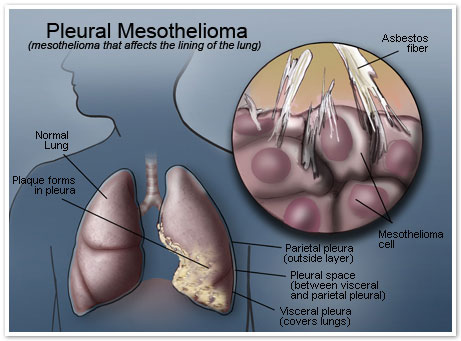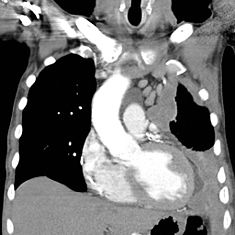1-Scope
This Practice Direction applies to claims for compensation for mesothelioma.
2-Definitions
In this Practice Direction –
‘show
cause procedure’ means (without prejudice to the court’s general case
management powers in Part 3 of the CPR) the procedure set out in
paragraph 6;
‘outline submissions showing cause’ means an outline or
skeleton argument of the defendant's case within the show cause
procedure; and
‘standard interim payment’ means the standard payment
in respect of interim damages, and (if appropriate) interim costs and
disbursements as determined from time to time by the Head of Civil
Justice. The amount of this payment is currently £50,000.
Starting proceedings
3.1
The
claim form and every statement of case must be marked with the title
‘Living Mesothelioma Claim’ or ‘Fatal Mesothelioma Claim’ as
appropriate.
3.2
In order for the court to adopt the show
cause procedure in the first case management conference, the claimant
must file and serve any witness statements about liability (as are
available) –
(1) either –
(a) at the same time as filing and serving the claim form and (where appropriate) the particulars of claim; or
(b) as soon as possible after filing and serving the claim form and (where appropriate) the particulars of claim; and
(2) in any event not less than 7 days before the case management conference.
3.3
Any witness statement about liability must identify as far as is possible –
(1) the alleged victim's employment history and history of exposure to asbestos;
(2) the identity of any employer where exposure to asbestos of the alleged victim is alleged;
(3) details of any self employment in which the alleged victim may have been exposed; and
(4) details of all claims made and payments received under the Pneumoconiosis etc. (Workers' Compensation) Act 1979.
3.4
The claimant must also attach to the claim form –
(1) a work history from H M Revenue and Customs (where available); and
(2) any pre-action letter of claim.
Claimants with severely limited life expectancy
4.1
Where the claimant believes that the claim is particularly urgent then on issue of the claim form, the claimant –
(1)
may request in writing that the court file is placed immediately before
a judge nominated to manage such cases in order to fix a case
management conference; and
(2) must explain in writing to the court why the claim is urgent.
4.2
Where
the court decides that the claim is urgent (and notwithstanding that a
claim has not yet been served or a defence has not yet been filed) it
will –
(1) fix the date for the case management conference to take place within a short period of time; and
(2) give directions as to the date by which the claimant must serve the claim form if it has not been served already.
Fixing the case management conference for other claims
5.1
Where paragraph 4 does not apply and –
(1) a defence is filed by the defendant or one of the defendants (where there is more than one); or
(2) the claimant has obtained a default judgment,
the
court file will be referred to a judge nominated to manage such cases
and the judge will give directions for the date of the case management
conference.
5.2
Claims marked ‘Living Mesothelioma Claim’ will be given priority when fixing a case management conference.
The show cause procedure
6.1
The
show cause procedure is a requirement by the court, of its own
initiative and usually on a ‘costs in the case’ basis, for the defendant
to identify the evidence and legal arguments that give the defendant a
real prospect of success on any or all issues of liability. The court
will use this procedure for the resolution of mesothelioma claims.
6.2
At
the first case management conference, unless there is good reason not
to do so, the defendant should be prepared to show cause why –
(1) a judgment on liability should not be entered against the defendant; and
(2)
a standard interim payment on account of damages and (if appropriate)
costs and disbursements should not be made by the defendant by a
specified date.
6.3
At the first case management conference if
liability remains in issue the court will normally order that the
defendant show cause within a further given period.
6.4
The order requiring the defendant to show cause within a further given period will direct –
(1) that the defendant file and serve on the claimant by a specified date outline submissions showing cause and –
(a)
if the outline submissions are not filed and served by a specified
date, judgment, for a sum to be determined by the court, will be entered
against the defendant without the need for any further order and the
defendant will be ordered to make a standard interim payment by a
specified date; or
(b) if the outline submissions are filed and served by the specified date, the claim will be listed for a show cause hearing; or
(2) that the defendant show cause at a hearing on a date fixed by the court.
6.5
At the first case management conference the court will –
(1)
fix the date or trial window for the determination of damages and give
any other case management directions as appropriate where the defendant
admits liability or judgment is entered;
(2) fix the date or
trial window for the determination of damages and give any other case
management directions as appropriate where an order to show cause under
paragraph 6.3 has been made (if the defendant subsequently shows cause
then the determination date or trial window may be utilised for the
trial of any issue); or
(3) in cases in which there is to be a trial on liability, give directions including the date or window for the trial.
6.6
Where the defendant fails to show cause on some issues, the court will normally enter judgment on those issues.
6.7
Where
the defendant fails to show cause on all issues, the court will enter
judgment for a sum to be determined and will normally order that a
standard interim payment be made.
6.8
Where the defendant
succeeds in showing cause on some or all issues, the court will order a
trial of those issues. The court may also require the issue of quantum
or apportionment (as appropriate) to be dealt with at the trial provided
that it does not delay the date for the fixing of the trial.
Setting the trial date
7.1
In
Living Mesothelioma Claims the date of the determination of damages or
the trial will generally not be more than 16 weeks following service of
the claim form.
7.2
In Fatal Mesothelioma Claims the hearing date may be more than 16 weeks following service of the claim form.
Taking evidence by deposition
8.
Any
party who for good reason wishes evidence to be taken by deposition may
apply to the court at any time for such an order. However, the court
will normally expect that such a request is made at a case management
conference. The order will include a direction for the recording of such
evidence on DVD and for the provision of a transcript. The parties must
also be prepared to arrange for the provision of equipment to view the
DVD by the court.
(Part 34 contains provisions for evidence to be taken by deposition.)
Compliance with pre-action protocols
9.
In Living Mesothelioma Claims the court may decide not to require strict adherence to
Practice Direction (Pre-Action Conduct) and
any relevant pre-action protocol.








